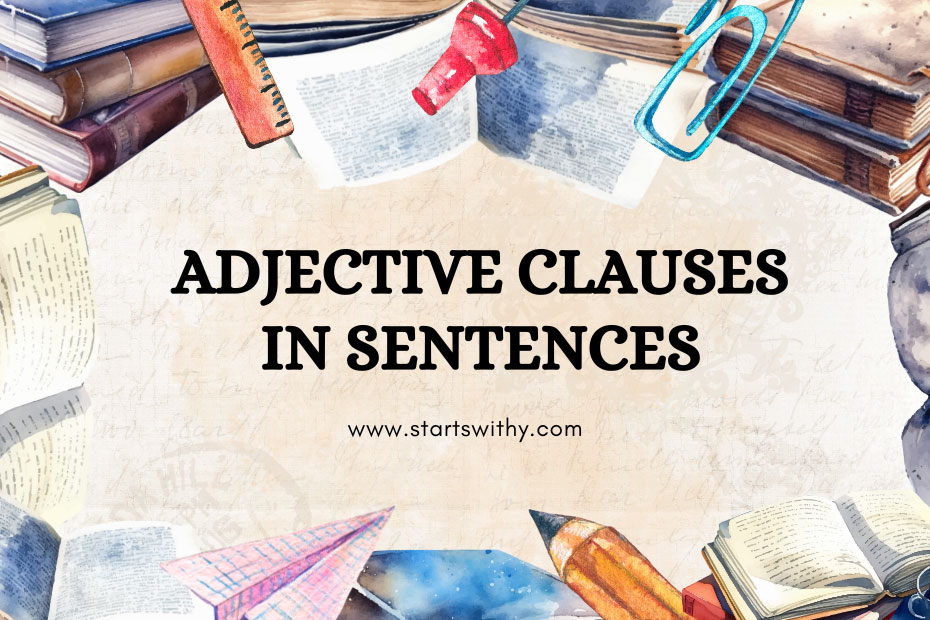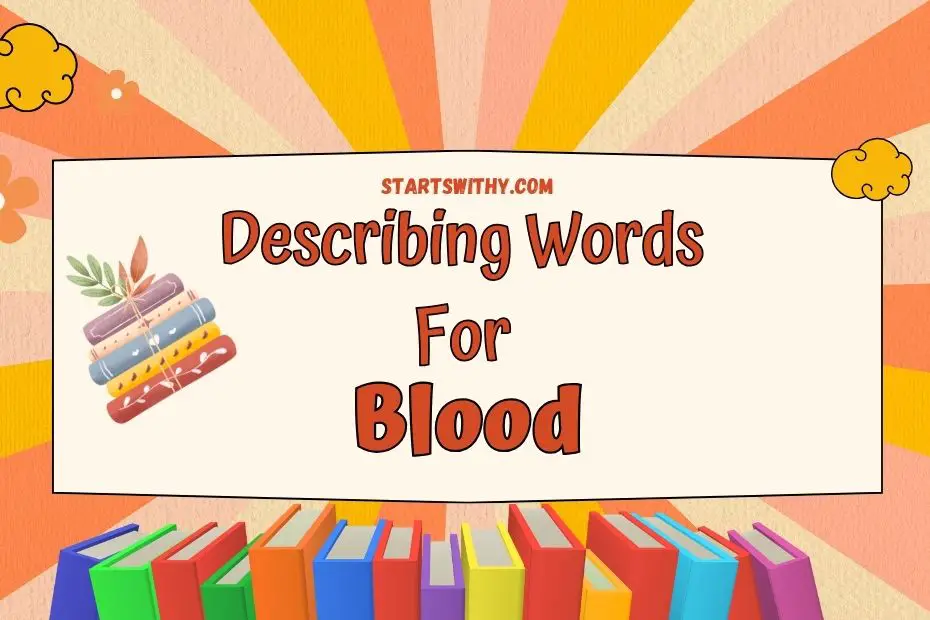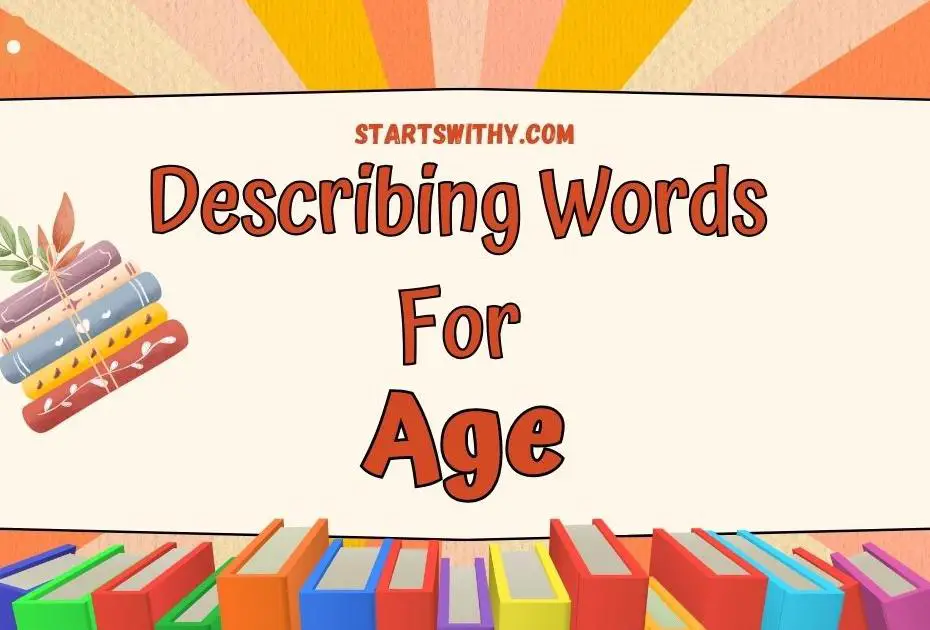Diving into the heart of English grammar, I’ve always found that adjective clauses add a layer of depth to our sentences. They’re the secret ingredient that turns a basic statement into a rich, detailed tapestry of language.
As I explore the nuances of complex sentences, I’ve noticed how adjective clauses seamlessly integrate to provide essential information about nouns. They’re like the spices in a gourmet dish, subtly enhancing flavor without overpowering the main ingredients.
I’m here to unravel the mystery behind these clauses, showing you how they function and why they’re crucial for vivid, expressive communication. Let’s embark on this grammatical journey together and master the art of crafting intricate sentences with ease.
What are Adjective Clauses?
When I delve into the aspects of English grammar, I find adjective clauses to be particularly interesting. They’re like secret agents, working behind the scenes to give information about nouns. Picture a typical sentence as a stage. Your main actors are the subject and the verb, but then, in comes the adjective clause, adding a twist to the plot.
Adjective clauses are groups of words that contain a subject and a verb and provide a detailed description of a noun. They often start with relative pronouns like who, whose, whom, which, or that. For instance, if I say, “The teaching methods that appeal to young learners are diverse,” the clause ‘that appeal to young learners’ is the adjective clause offering more about ‘teaching methods’.
Let me break it down with bullet points for simplicity:
- Subject and Verb: Every adjective clause has them.
- Relative Pronouns: These often kick off the clause.
- Descriptive Nature: They detail the noun they modify.
They are quite the chameleons because they can also start with relative adverbs, such as when, where, and why. Consider the sentence, “I remember the playground where I used to play.” The clause ‘where I used to play’ takes us to the specific playground in my memory, enhancing my sentence with a location detail.
It’s important to recognize which noun the adjective clause is describing. Sometimes, they’re essential without any commas, as they clarify exactly which thing we’re talking about. Other times, they add extra, non-essential info and are set apart with commas, rather like giving someone a friendly pat on the back with extra information.
Let’s not forget that these clauses can be reduced as well, often to create more concise statements. So a sentence with an adjective clause like ‘The teacher who is reading to the children is kind’ can be trimmed to ‘The teacher reading to the children is kind’, maintaining the same meaning with fewer words.
As you tackle the teaching of early language concepts, bear in mind that it’s not only about the words themselves, but how they connect to form the complex tapestry that is a language. Adjective clauses are one of those threads, subtle but mighty in their effect.
Functions of Adjective Clauses
Adjective clauses don’t just add flavor to sentences; they serve some crucial functions which are key to understanding complex sentences. I’ll guide you through these functions that make adjective clauses an essential tool for language development among young learners.
Describing and Identifying Nouns
First up is the power of description. Adjective clauses are phenomenal at providing additional details about a noun, making it more vivid in the reader’s mind. When I say, “The dog that barked all night,” the adjective clause ‘that barked all night’ helps identify which dog I’m talking about. It’s a world of difference from just mentioning ‘the dog,’ which could be any dog. By using this clause, kids learn to describe nouns more precisely, enriching their vocabulary and sentence complexity.
Specifying and Clarifying
Another function is clarification. An adjective clause can specify one noun out of many, and in doing so, it clarifies which noun we’re referring to. In a classroom bustling with activity, if I note, “the child who painted a sunflower,” the adjective clause ‘who painted a sunflower’ specifies exactly who I mean. This precision helps children understand the importance of context and detail in communication.
Enhancing Sentence Variety
Lastly, let’s talk about enhancing sentence variety. A robust tool in deploying a range of sentence structures, adjective clauses give young learners the chance to express themselves in diverse ways. Instead of repeating simple sentences, they can combine ideas in complex sentences, which is critical for cognitive and language growth.
Through variety in sentence structures and the precise use of language, children can build complex ideas within their writing and speech. Such skills are foundational to effective communication and academic success later on. My aim is to help teachers see the potential in harnessing the power of adjective clauses to mold versatile communicators from an early age.
Types of Adjective Clauses
As I delve deeper into the intricacies of adjective clauses, it’s essential to understand the different types that can be employed in complex sentences. Recognizing the variety can not only enhance the clarity of expression but also enrich the linguistic experience for young learners.
Restrictive Adjective Clauses
The first type is the restrictive adjective clause, also known as the essential adjective clause. This type of clause is crucial because it narrows down the identity of the noun it modifies. Without it, the sentence could be ambiguous or the noun could be confused with others in the same context. For example:
- The book that has a red cover is on the table.
In this case, ‘that has a red cover’ specifies which book I’m referring to, distinguishing it from any other books that might be on the table.
Non-Restrictive Adjective Clauses
In contrast, non-restrictive adjective clauses provide additional information about a noun, but are not essential to identify the noun being discussed. These clauses are set off by commas and offer extra details without limiting the meaning of the noun. Consider this example:
- My sister’s backpack, which is covered in patches, is quite the conversation starter.
Here, ‘which is covered in patches’ adds a descriptive element to ‘backpack’ but is not needed to understand that I’m referring to my sister’s backpack.
Relative Pronouns and Adverb Beginnings
Adjective clauses are often introduced by relative pronouns like who, whom, whose, that, and which. They can also start with relative adverbs such as when, where, and why. These words are pivotal since they connect the clause to the noun or pronoun being described:
- The teacher who reads us stories is Ms. Johnson.
- The playground where we play is newly renovated.
By integrating these types of adjective clauses, preschool teachers can craft sentences that are not only grammatically correct but also engaging. They’ll be able to illustrate clearly how these clauses function, using real-world examples that resonate with kids’ everyday experiences. Moreover, lesson plans can incorporate interactive activities to reinforce the concept, such as identifying adjective clauses in children’s books or creating sentences with specific types of clauses.
How to Use Adjective Clauses in Complex Sentences
When I’m crafting lessons for preschoolers, I find it incredibly useful to demystify complex sentence structures by breaking them down into more manageable pieces. Adjective clauses are one such piece that, when effectively integrated into complex sentences, can enhance both understanding and engagement.
First, I ensure that the examples of complex sentences I choose are simple and relatable for children. For instance, using a sentence like “The dog that has spots is running in the yard” introduces a complex structure with an adjective clause “that has spots”. Here, the clause clearly describes which specific dog I’m talking about, making the sentence more informative.
I also like to incorporate interactive activities where kids can match images with sentences that use adjective clauses. This way, children are not only hearing and repeating the sentences but also visually identifying the noun the adjective clause is describing. For example, an exercise might include a set of images of different dogs, and each child would have to pick the dog “that has spots.”
Another effective strategy is to have children build their own sentences using adjective clauses from a provided list of nouns and descriptors. Young learners naturally enjoy talking about their favorite objects or pets, so guiding them to say sentences like “My teddy bear, which is very soft, is my favorite toy” reinforces the concept with a personal touch.
It’s also important to highlight the flexibility of adjective clauses in complex sentences. By explaining that these clauses can come after the noun they describe, I show children different ways they can express their thoughts. A sentence could either be “The cat, which is sleepy, is lying on the sofa” or “The cat that is lying on the sofa is sleepy.” This accentuates the idea that the structure of their sentence can change without altering the meaning.
Introducing the concept of relative pronouns like ‘who’, ‘where’, and ‘that’ as connectors in these clauses further expands their ability to formulate complex sentences. By associating actions with ‘who’ or places with ‘where’, for example, makes the sentences kids create even more descriptive and precise.
By incorporating these approaches, children not only grasp the basics of using adjective clauses in complex sentences but also gain confidence in their verbal and written expression. Engaging activities, interactive lessons, and a gradual increase in complexity ensure a solid understanding that paves the way for more advanced grammar concepts.
Examples of Adjective Clauses in Action
When I’m teaching preschoolers about adjective clauses, I find it effective to bring the concept to life with vivid examples. Nothing beats real-world scenarios for facilitating understanding. Here’s how I do it.
Consider a simple sentence like “The cat is sleeping.” To enrich this with an adjective clause, I’d say, “The cat, which is black, is sleeping.” The clause “which is black” gives the kids more information about the cat. It’s crucial to repeat this structure with various examples, reinforcing how the adjective clause functions.
I encourage curiosity by asking them questions like “Can you tell me about your favorite animal using a sentence like the one I just said?” This invites the children to craft their own sentences. They might say “The dog, which is fast, runs in the park,” or “The bird, which is small, flies in the sky.” These interactive moments solidify their understanding.
Using image cards as visual prompts, I help the children link the clauses to a picture. For example:
- Show a card with a brightly colored fish.
- I’d then have them construct a sentence like “The fish, which is colorful, swims in the tank.”
This multi-sensory approach helps cement the connection between the clause and the subject it describes.
Another trick up my sleeve is integrating adjective clauses into a storytelling activity. As we read a story together, I’ll pause and highlight sentences that contain adjective clauses, emphasizing their use. I’ll point out phrases like “the girl, who was very brave, walked into the dark forest,” engaging them in a dialogue about why the writer chose to describe the girl as brave.
By varying examples and keeping interactions lively, I ensure that learning about adjective clauses isn’t just educational—it’s downright enjoyable. Each lesson builds on the last, guiding preschoolers towards a natural and confident use of adjective clauses in their speech and writing. Through consistent practice and context-rich examples, children gradually capture the essence of complex sentences, enhancing their language skills one clause at a time.
Conclusion
Mastering adjective clauses can open up a world of expression for preschoolers, enriching their language at a pivotal time in their development. I’ve shared how using image cards and storytelling can turn a complex grammatical concept into an engaging adventure for young learners. Remember, keeping the energy high and the examples relevant will not only make the lessons enjoyable but also help cement this foundational knowledge. As they grow, you’ll see the fruits of your efforts in their blossoming communication skills. Let’s make learning grammar something children look forward to by infusing it with creativity and joy.



